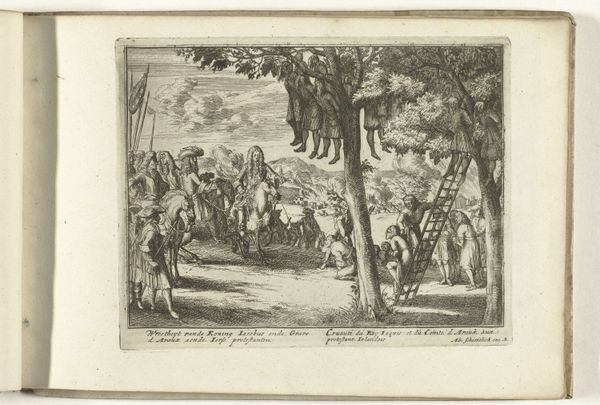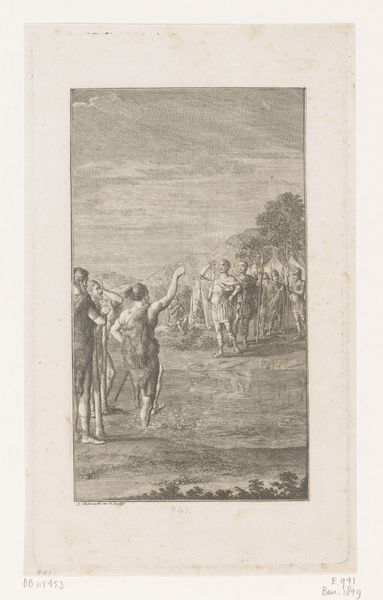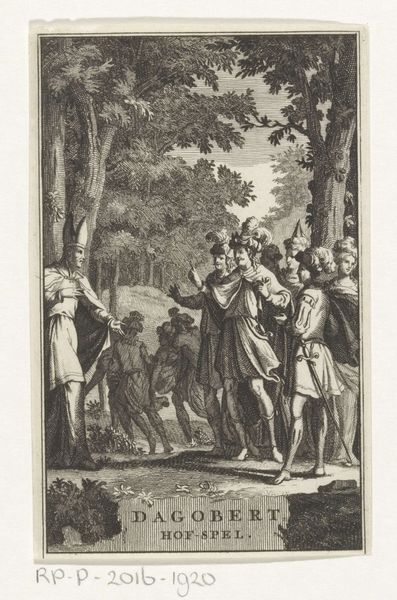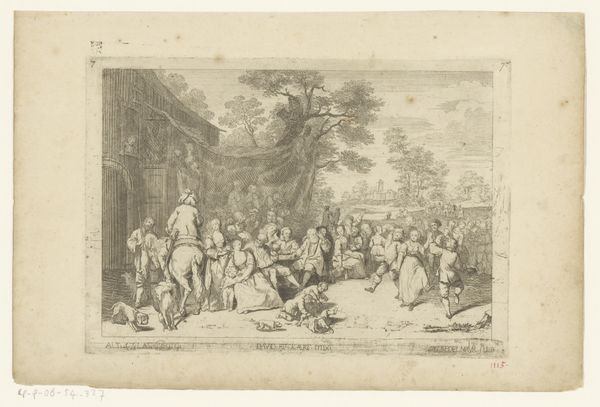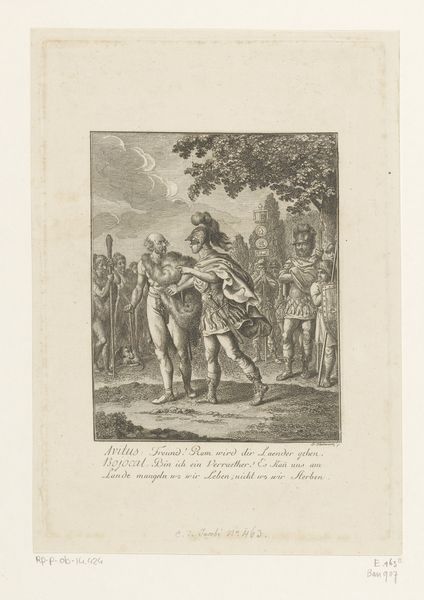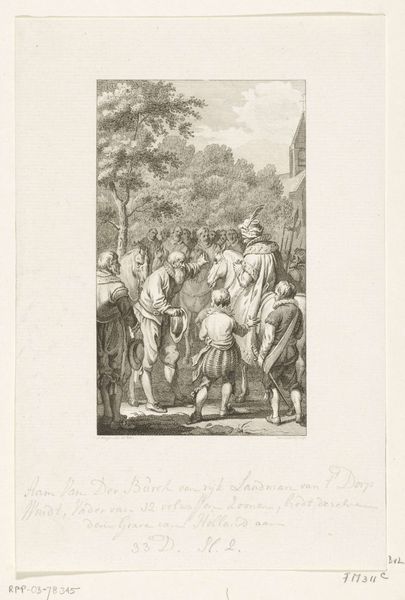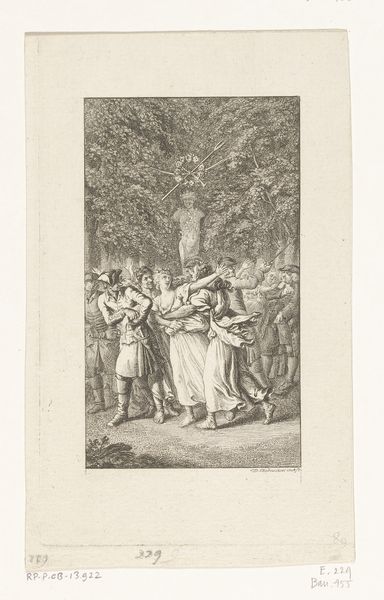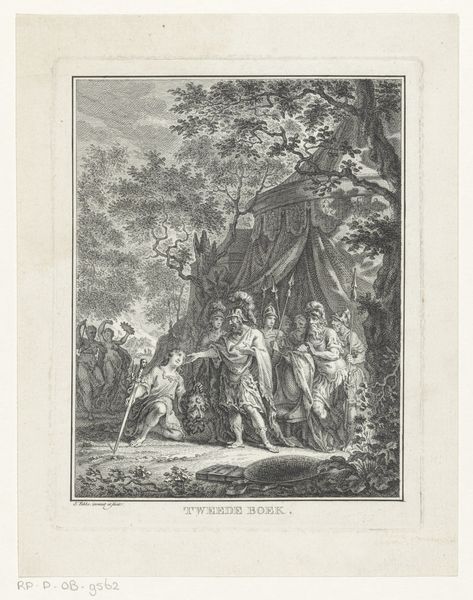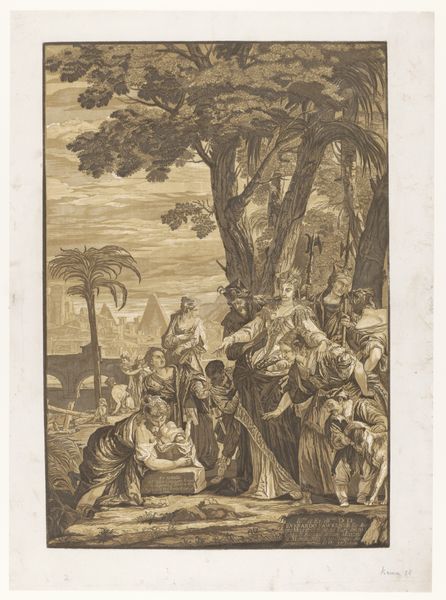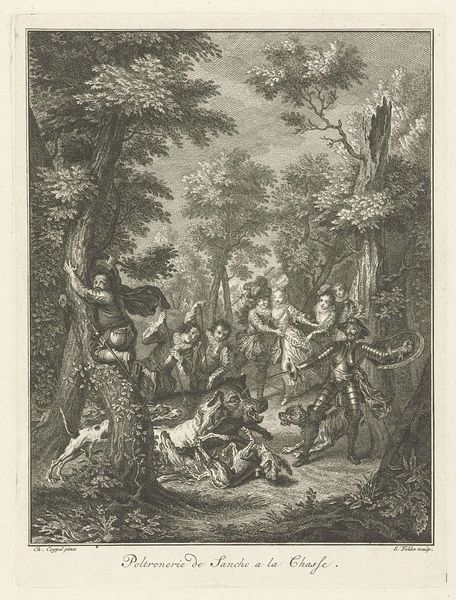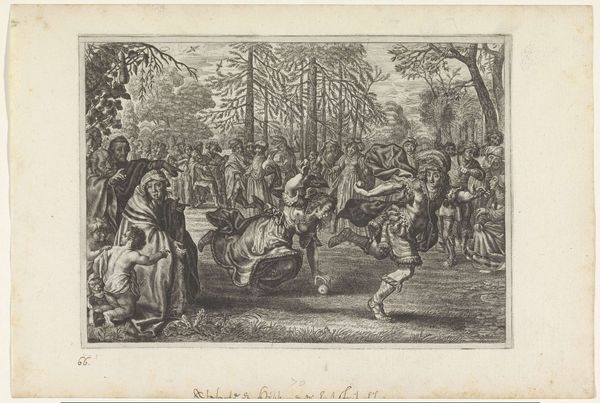
print, engraving
#
neoclacissism
# print
#
old engraving style
#
landscape
#
figuration
#
history-painting
#
engraving
Dimensions: height 163 mm, width 119 mm
Copyright: Rijks Museum: Open Domain
Editor: Here we have "Raadsvergadering bij de Bataven" from 1786 by Harmanus Vinkeles, a print from the Rijksmuseum collection. Looking at it, there is a stillness to the scene – even with the horses and the crowd of figures, the meticulous lines and the landscape give it a somewhat solemn and posed ambiance, as if we've stumbled into an historical play. What story do you read in this print? Curator: It whispers to me of history as performance. Vinkeles wasn’t just documenting; he was staging a scene from the Batavian Revolt, a key moment in Dutch identity formation. Notice how the figures, draped in classical garb, are arranged almost like actors on a stage. It’s history refracted through the lens of Neoclassical idealism. A theatrical production intended to teach a moral. And to unite a fractured country. Can you feel the call to patriotism embedded in the deliberate, ordered composition? Editor: I can see that, particularly in the attire that harkens back to antiquity and, given it’s an engraving, probably aided in dissemination to a wider audience. It seems designed to evoke a sense of shared history and purpose. But were the Batavians actually toga-clad? Curator: Ah, that’s the delightful tension! Historical accuracy wasn't really the point, was it? The toga, borrowed from the Romans, lent the Batavians an air of gravitas and connected them to the ideals of republican virtue, of liberty and independence. It's about creating a powerful narrative, and a symbol of what the nation could stand for. Sometimes, it's the creative reimagining that gets at the heart of the thing. Isn't it the symbolic power that gives history its real kick? Editor: That makes me see it in a new light – less as a literal depiction, and more as a strategic, almost propagandistic, piece of storytelling. I'll certainly remember this piece—a little staging can go a long way in capturing people's hearts. Curator: Exactly. Next time, you might question whether you’re viewing what actually was or the stage upon which identity is being formed. And what that staging conceals… or reveals.
Comments
No comments
Be the first to comment and join the conversation on the ultimate creative platform.

